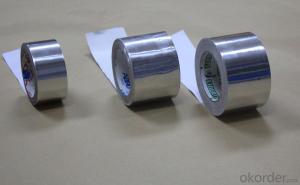When it comes to home comfort and energy efficiency, one often overlooked aspect is the role of flexible duct insulation. It’s not just about keeping your home warm or cool; it’s about making sure you’re not wasting energy and money in the process. In this article, we’ll explore the importance of flexible duct insulation, how it can help reduce energy loss, and why it’s worth considering for your home.
The Unseen Energy Wasters: Flexible Ducts Without Insulation
Flexible ducts are a common feature in many homes, providing an easy way to route heating and cooling air throughout the building. However, without proper insulation, these ducts can become a significant source of energy loss. Imagine your ducts as a long, winding road for your air – the more twists and turns, the more opportunities for heat or cool air to escape.
Why Insulation Matters
Insulation is the key to maintaining the integrity of the air being transported through your ducts. It acts as a barrier, preventing heat transfer between the air inside the duct and the surrounding environment. This is particularly important in areas with extreme temperature fluctuations, where the difference between indoor and outdoor temperatures can be quite large.
The Science Behind It: Heat Transfer and Insulation
The science behind heat transfer is fascinating. Heat naturally moves from areas of high temperature to areas of low temperature until equilibrium is reached. Insulation works by slowing this transfer, keeping your home’s conditioned air where it’s supposed to be – inside your home. The better the insulation, the less energy your HVAC system has to work to maintain the desired temperature.
Types of Insulation: Which One is Right for You?
There are several types of flexible duct insulation available, each with its own benefits and drawbacks. Some of the most common types include:
– Fiberglass: Known for its durability and resistance to fire, fiberglass is a popular choice for many homeowners.
– Cellulose: Made from recycled paper products, cellulose insulation is an eco-friendly option that also provides excellent sound absorption.
– Foam: Easy to install and offering good thermal performance, foam insulation is a convenient choice for DIY enthusiasts.
– Spray Foam: Applied as a liquid and expanding to fill gaps, spray foam insulation provides an airtight seal, further reducing energy loss.
DIY or Professional Installation: Which Path to Choose?
Deciding whether to install flexible duct insulation yourself or hire a professional can be a tough call. If you’re handy and enjoy DIY projects, you might be tempted to tackle the job on your own. However, there are benefits to hiring a professional, including:
– Expertise: Professionals have the experience and knowledge to ensure the insulation is installed correctly and effectively.
– Time Savings: A professional team can complete the job more quickly, saving you time and effort.
– Guarantees: Many professionals offer guarantees on their work, giving you peace of mind.
The Cost-Benefit Analysis: Is It Worth It?
While the upfront cost of installing flexible duct insulation can be a deterrent, the long-term benefits often outweigh the initial expense. By reducing energy loss, you can expect to see a decrease in your energy bills, which can save you money over time. Additionally, better insulation can improve the overall comfort of your home by ensuring a more consistent temperature throughout.
Green Benefits: Reducing Your Carbon Footprint
Beyond the financial savings, there are also environmental benefits to consider. By reducing energy consumption, you’re also reducing your home’s carbon footprint. This is a small but significant step towards a more sustainable lifestyle.
The Bottom Line: Making an Informed Decision
When considering flexible duct insulation, it’s important to weigh the pros and cons. Take the time to research the different types of insulation, consider the installation process, and think about the long-term savings and environmental impact. With the right information, you can make an informed decision that benefits both your wallet and the planet.
Final Thoughts
Flexible duct insulation may not be the sexiest home improvement project, but it’s one that can make a real difference in your home’s energy efficiency and comfort. By understanding the importance of insulation, the types available, and the benefits of installation, you’re taking steps towards a more comfortable and eco-friendly home. So, the next time you’re thinking about ways to improve your home’s energy performance, don’t forget to look up – and consider the ducts.

